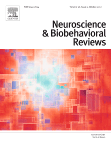 The journal Neuroscience has retracted a 2011 paper by an alcohol researcher from the United Arab Emirates, who apparently conducted some mouse studies without the blessing of his institution’s animal ethics officials. At least, that’s what the retraction notice would have us believe.
The journal Neuroscience has retracted a 2011 paper by an alcohol researcher from the United Arab Emirates, who apparently conducted some mouse studies without the blessing of his institution’s animal ethics officials. At least, that’s what the retraction notice would have us believe.
The paper in question, “The pre-synaptic metabotropic glutamate receptor 7 “mGluR7” is a critical modulator of ethanol sensitivity in mice,” by Amine Bahi, was published in December 2011 and cited three times (twice by the author), according to Thomson Scientific’s Web of Knowledge. But as the notice explains:







